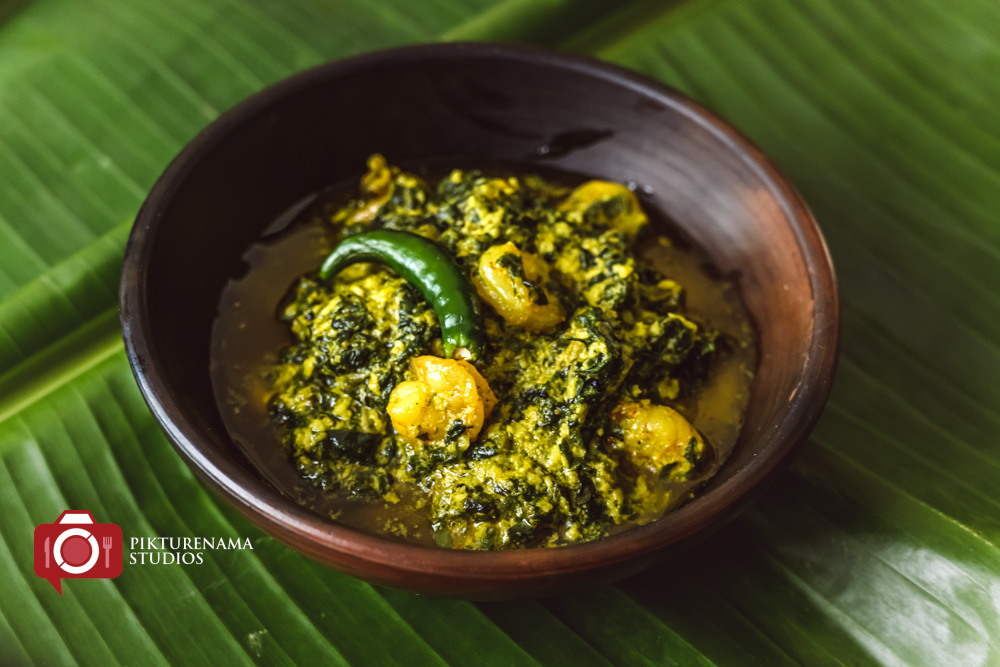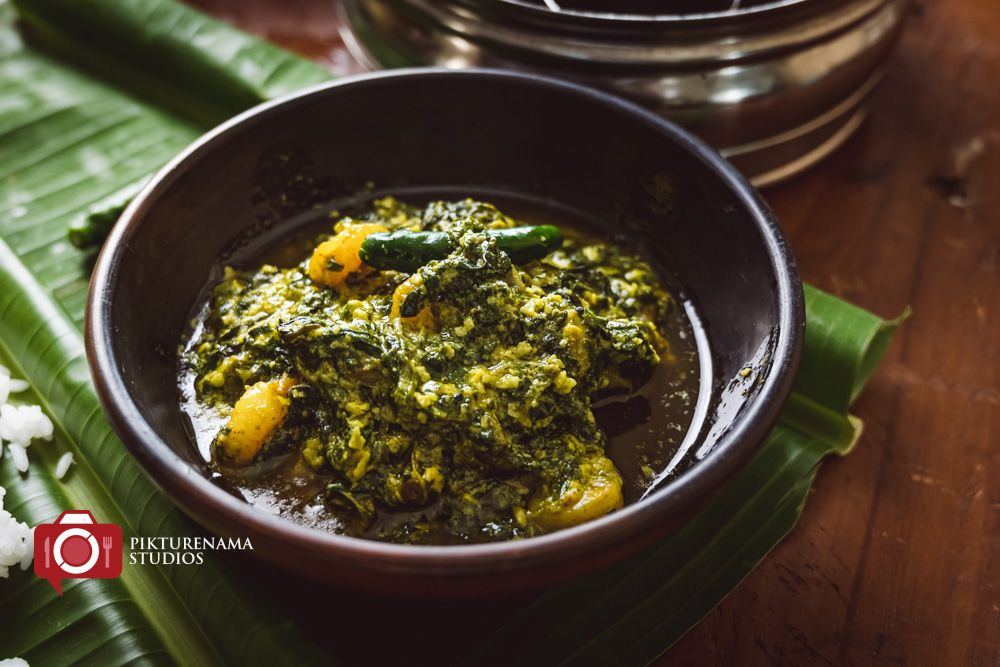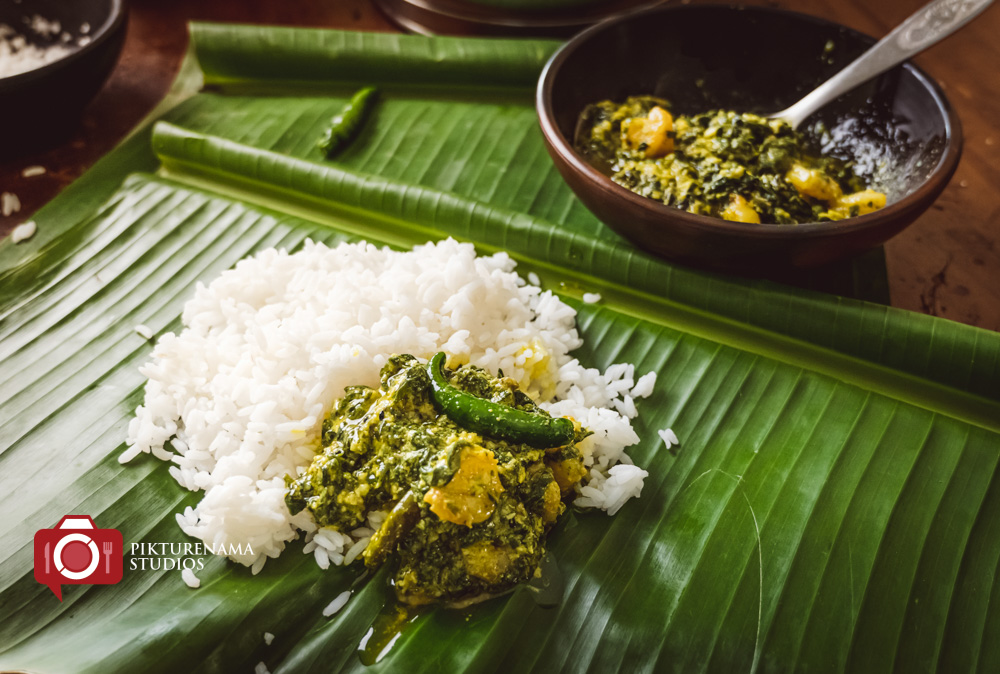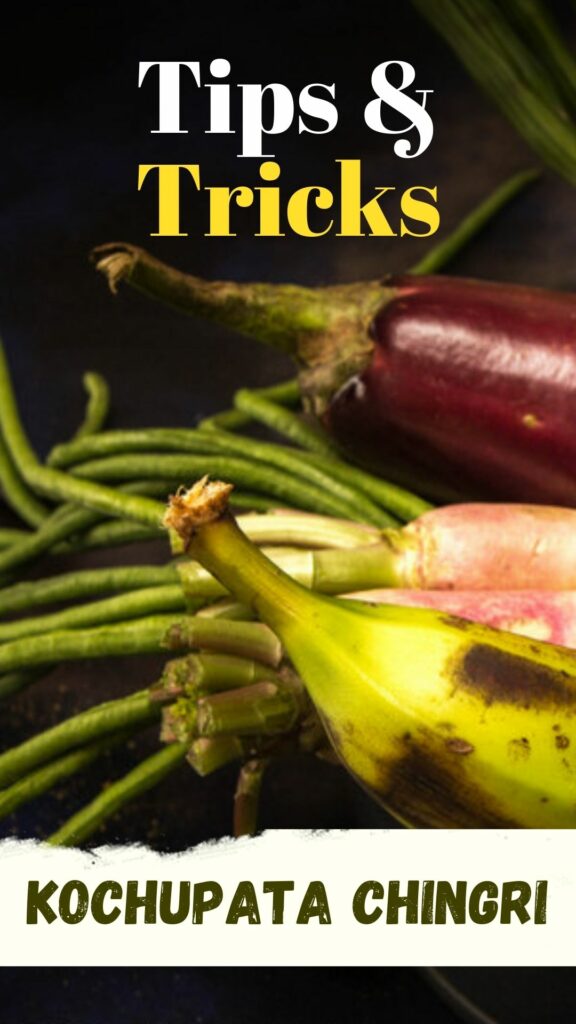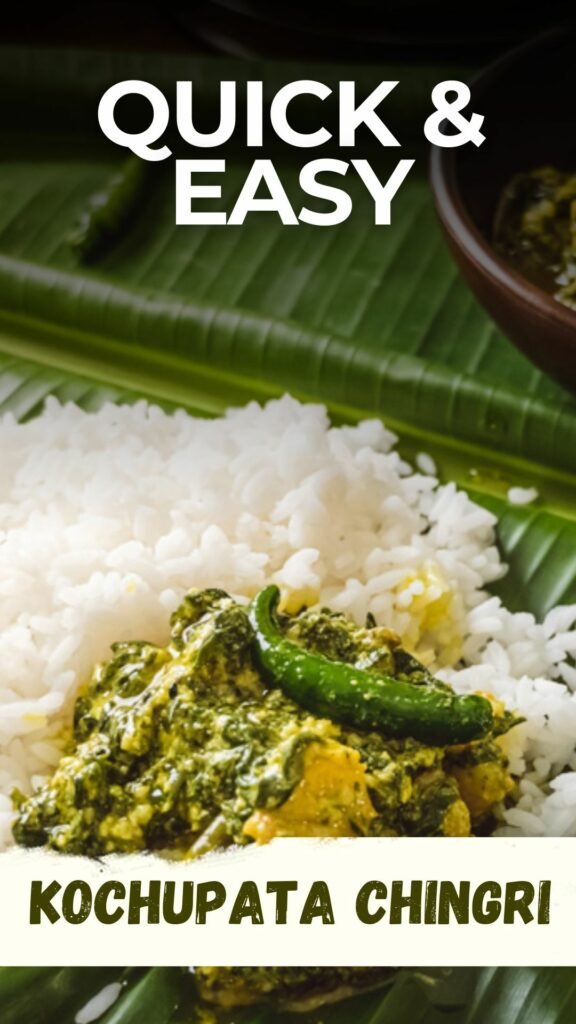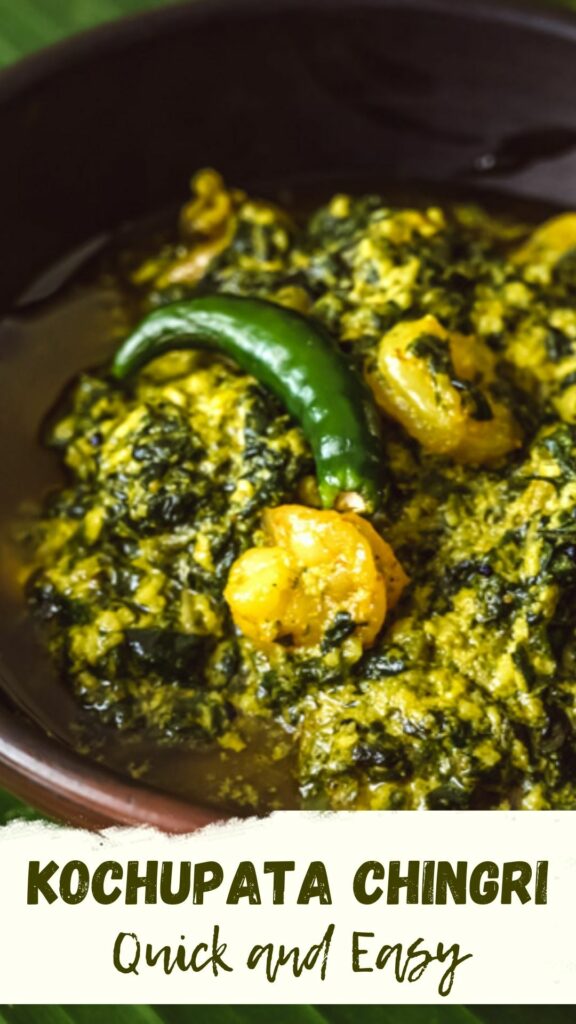Kochupata chingri- creating the video and sharing it on various social media platforms was truly an eye-opening experience for us. One would wonder why. We have been sharing videos on Instagram for the last 4 years and youtube and Facebook quite sporadically. Facebook and Youtube had never been our focus area. Putting up a video or reel on Instagram meant meaningful positive conservation with many and eventually, we gained many friends through this platform.
Having grown up outside of Bengal, I wasn’t aware of the cultural differences between ghoti and bangal. I am a Bangal and I only met my other Bangal relatives. After marriage, I realised that we were so different, even in what we ate. I can safely say that ghotis rarely ate kochu or taro, whether it is the stem or the leaf. Whereas foraging was a big part of Bangal culture. Nothing good or bad, it’s just a factor of circumstances, your surroundings and many other reasons. That being said, kochu shak was often made at our home. The stem of colocasia is referred to as ‘kochu shaak’ and the leaves are called ‘kochupata’. Kochu shaker ghonto, ilish macher matha diye kochu is commonly cooked at home. Even chingri diye kochu shak was done often.
Kochupata Chingri and Kasturi- The Bangladeshi Restaurant
Anindya was introduced to kochu pata diye chingri when we went to the new Kasturi restaurant at Ballygunje. When Kasturi opened its new outlet at Ballytgunje, which was a little more posh than the old Free School Street outlet, people from South Kolkata flocked to the place. To be honest, the Free School Street one was always good but it was crowded and without air conditioning. Hence, there was a sudden love for Bangladeshi food and kochu pata chingri was a big hit. A lot of people were talking about it and referring friends and family to Kasturi to try out their kochupata chingri.
The video was an instant hit. I spoke about Kasturi and how this dish had become very popular in Kolkata. Initially, there were a lot of encouraging comments and shares. Soon, as the video views started increasing, overnight we gained 3000 followers on Facebook. Then the trolling began along with a lot of great information on the various ways of cooking kochu. Like most recipes, everyone had their stories and memories to share. There were disputes about the voice-over. There were ghoti bangal boxing matches happening and we were having a ringside view. Abuses were being hurled at my English accent and in general why I narrated a Bengali recipe in English and so on. After a day of struggles, I decided to not look at them anymore. The views are soon going to touch a million, which is a great thing!!
Few Things to Remember While Cooking This
- There are various kinds of taro or kochu available all around. However, it is safer to go with a doodh kochu.
- After boiling the leaves, make sure you discard all the water.
- When you grind the mustard paste, grind it with green chillies so that it doesn’t become bitter.
- Make sure to use tamarind juice or lemon juice at the end of the cooking to avoid throat itch.
Share your cooking with us
Are you following us on our youtube channel Cook with Pikturenama?
Here is the youtube version of the recipe. Check this out and listen to some of our interesting stories of Kochupata Chingri
Do try this recipe and share your feedback. You can also reach out to us at our social media handles Instagram, Facebook or any of our personal Facebook (Madhushree & Anindya) & Twitter profiles. Please post a picture and tag us.
You can also check out the Instagram handle of PIKTURENAMA STUDIOS if you want to give your culinary creations a voice.
If you have any queries regarding food photography, food styling, and Content creation, Check out our website right here – BEHANCE
Here is the reel which we had uploaded in Instagram for Kochupata Chingri
https://www.instagram.com/reel/Ct5tMywvIWm/?utm_source=ig_web_copy_link&igshid=MzRlODBiNWFlZA==
Pin this for your recipe board. And you can follow us on Pikturenama recipes for more recipe ideas (Link)
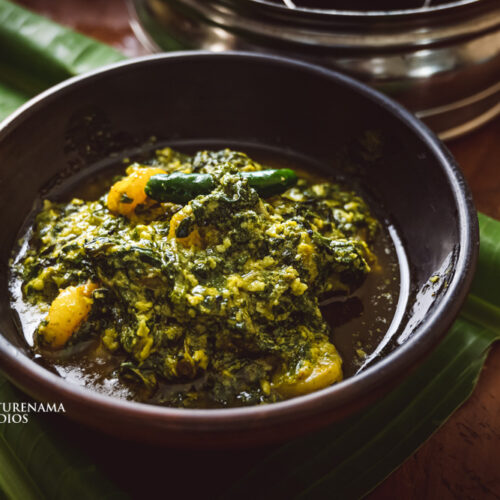
Kochupata Chingri | Kochupata Diye Chingri | Taro leaves with Prawns
Ingredients
- 8 nos small taro leaves
- 2-4 nos green chillies
- ½ tsp nigella seeds
- 200 gms small prawns
- 1 tsp turmeric powder
- 2 tbsp black mustard seeds
- 2 tbsp freshly grated coconut
- 1 tsp tamarind paste
- 1 tsp sugar
- ½ cup mustard oil
- salt to taste
Instructions
- Take kochu pata and wash them thoroughly with water. Then cut the leaves into thin strips. Boil the leaves for 4-5 minutes and then discard the water.
- Heat 2 tbsp of mustard oil in a kadai and add 2 green chillies and half tsp of nigella seeds.
- As soon as they splutter, add 200 gms of small prawns. Sprinkle 1 tsp of turmeric powder and stir fry on high heat for 2-3 minutes.
- Then add 2 tbsp of black mustard paste (soak 2-3 tbsp of black mustard in water for 15 mins, discard the water and make a paste with little water. Strain this paste using a little more water so that the entire husk is discarded. Then use as needed)
- Stir this on medium heat and add taro leaves, salt and half a cup of water.
- Continue cooking this for 2-3 minutes and then add slit green chillies, 1-2 tbsp of freshly grated coconut and 1-2 tsp of tamarind water (you can alternatively add lime juice and balance the sourness with a little sugar if needed), give it all a good mix and finally drizzle 1-2 tbsp of mustard oil (absolutely essential for the taste).
- Serve this with rice
- While eating, you can squeeze for lemon juice if you like.

